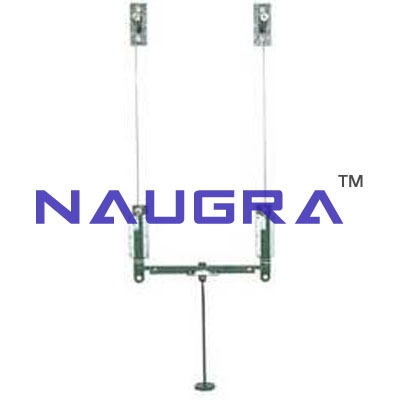- Civil Lab Mechanical Lab Engineering Lab Equipments
- sales@didacticlabequipments.com

CAT NO: DIDACTICNLE-Export-053007
Compound Wires Apparatus- Engineering Lab Training Systems.
Features Low cost effective teaching Self-contained Wall-mounted Simple
determination of Young s modulus Verification of Hooke s Law Range of
specimen material and thickness available Investigation of stresses in
compound suspension 3 year warranty Range of Experiments To determine
Young s modulus of elasticity for the specimen wire To verify Hooke s
Law To evaluate the equivalent modulus of elasticity for the combined
wire suspension To determine the load in the wire under conditions of
equal strain in each wire. To compare experimental and theoretical
results Description Loaded wires form a simple experiment which produces
excellent and easy to understand results. A single wire can be used to
determine Young s Modulus of Elasticity for the material, and to confirm
Hooke s Law. With two wires, the experiment can be widened to
investigate the effective characteristics of two different materials
subjected to a common strain. Two parallel sets of brackets are secured
to a wall minium 2m apart in a vertical line; a top bracket from which
to hang a specimen wire, and a slider bracket used to measure the
extension of the wire. The slider includes a vernier for accurate
measurement. For safety, the lower bracket should be reasonably close to
the ground. The lower ends of each slide are connected by a link. A
load hanger can be moved along the link until strains are equalised in
each wire. The wires may be of different materials, but must be the same
length. This equipment is part of a range designed to both demonstrate
and experimentally confirm basic engineering principles. Great care has
been given to each item so as to provide wide experimental scope without
unduly complicating or compromising the design. Each piece of apparatus
is self-contained and compact. Setting up time is minimal, and all
measurements are made with the simplest possible instrumentation, so
that the student involvement is purely with the engineering principles
being taught. A complete instruction manual is provided describing the
apparatus, its application, experimental procedure and typical test
results.
